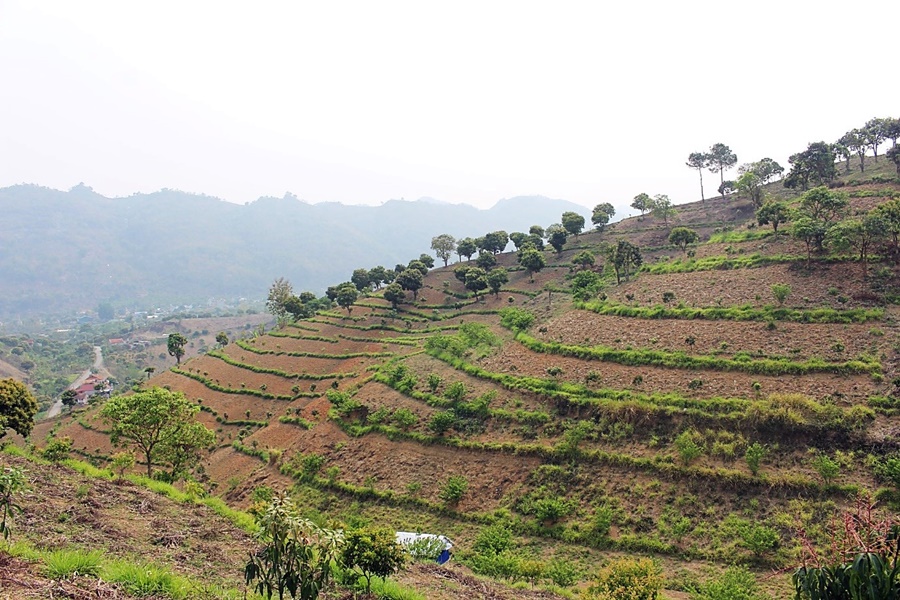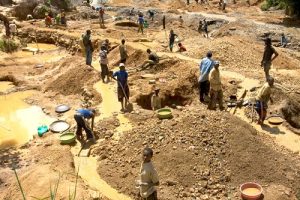
BY HAFTU GEBREZGABIHER
The current patterns of production, consumption, landscape degradation and pollution have led to the many challenges that all generations are collectively facing: particularly the biodiversity, climate and health crises, according to the Youth in Landscapes Initiative (YLI).
The initiative urges world leaders, decision-makers, civil society organizations, and individuals to recognize the importance of sustaining a healthy planet and address the inevitable products of our capitalist and colonial system.
The global environmental community stressed that we must achieve a world where all communities have access to restore and practice stewardship over their landscapes.We need to find the resources and tools that are grounded in inclusive knowledge to build a sustainable, resilient, and equitable world for current and future generations.We need everyone to realize that the Earth’s health is our health, and that having a safe place to call home is not an option, but a fundamental human right.
Before the COVID-19 pandemic began, the environmental community had declared 2020 the “super year for biodiversity”, with a series of international sustainable development events scheduled throughout the year to set the agenda for the upcoming United Nations Decade on Ecosystem Restoration (2021-2030).
Although most events were postponed until 2021, the environmental community has continued its advocacy for a sustainable present and future while governments try to bend the curve of the health crisis. The United Nations Convention on Biological Diversity (CBD) released and updated the zero draft of the post-2020 global biodiversity framework, which lays out pathways to halt biodiversity loss and promote resilient ecosystems towards achieving the CBD’s 2050 Vision of “Living in Harmony with Nature”.
The Ethiopian landscape potential is rich in faunal, floral and microbial diversity. Conservation paradigms, practices and policies have been variably successful. Traditional approaches in conservation have evolved awareness about biodiversity conservation. Climate change poses unknown fear and challenge to biodiversity conservation in the 21st century. There is urgent need of mapping of biodiversity in various environments, in ventorization, monitoring of biodiversity, and global data sharing.
According to the finding published by researchgate.net entitled “Biodiversity Status in Ethiopia and Challenges” the conservation of genetic resources would assist in future genetic improvement of crop plants and livestock. Bioprospecting-value addition to biodiversity will provide economic gain for the country. Necessary measures need to be initiated to safeguard the germplasms against potential threat to biopiracy. National legislations-for access and benefit sharing, and trans-boundary movement of germplasms need to be ensured to safeguard the interest of the country. Ethiopia needs to harmonize International and National laws in biodiversity conservation. A new thrust in biotechnology, nanotechnology and information and communication technology can contribute technologies to resolve key concerns related to agriculture, enabling food safety, controlling plant and animal diseases, ensuring environmental safety and sustainable use of natural resources.
The major physiogeographic features of Ethiopian landscape are massive highland mountains and plateau divided by the Great Rift Valley and surrounded by lowlands along the periphery. The Great Rift Valley runs northeast from Eritrea to Kenya in the south creating a vast depression. There is great altitudinal variation from 116 meters below sea level to 4620 meters above sea level. Although Ethiopia is a tropical country with typically hot and dry lowland areas, it has varied macro and micro-climatic conditions. The rainfall is variable in different parts, highest 2200 mm in highlands (>1500 meters) and lowest, 250 mm in lowlands (<1500meters). All these factors have contributed to richness of Ethiopian biodiversity with great level of endemism and genetic diversity that could be potentially harnessed for environmental sustainability and global warming mitigation efforts.
Meanwhile, the United Nations Environment Programme (UNEP) and the Food and Agriculture Organization of the United Nations (FAO) – supported by core partners, including the Global Landscapes Forum (GLF) have released a strategy for the United Nations Decade on Ecosystem Restoration 2021-2030. Global and regional initiatives, including the Bonn Challenge, Africa’s AFR100 Initiative, Latin America’s Initiative 20×20, the New York Declaration on Forests (NYDF), the UN Decade on Family Farming and others align with this vision and support activities of the CBD and the United Nations Decade on Ecosystem Restoration. Activities accompanying the post-2020 global biodiversity framework and the United Nations Decade on Ecosystem Restoration are opportunities for the GLF community to strengthen these guiding frameworks. During the GLF Biodiversity Digital Conference 2020 One World, One Health (28-29 October 2020), GLF held space for actors from across One World, One Health Recommendations to harness the power of landscapes sectors to explore the relationship between biodiversity and health. The event encouraged the world to harness the power of landscapes for transformative change towards radical inclusivity and sustainability.
The global community recommendations
The GLF community consists of thousands of scientists, environmental practitioners, policy-makers, Indigenous Peoples and Local Communities (IPLCs), youth, financial services, private corporations and the wider public from 7,400 organizations and 185 countries who have participated in GLF activities. This community will be instrumental in successfully contributing to the implementation of biodiversity action plans, monitoring progress on global restoration efforts and sustaining momentum for building knowledge on the nexus between biodiversity and health beyond 2030.
Recognizing the potential of the landscape approach, GLF and Youth in Landscapes Initiative (YLI) facilitated the co-creation of the present GLF Biodiversity Policy Recommendations; supporting pathways to achieving key paradigm shifts that offer guidance on harnessing the power of landscapes to achieve biodiversity and restoration ambitions for 2030 and 2050, paradigm shifts speak to the big-picture, systemic changes needed in societal thinking and structure, highlight changes in direction that policy must make to progress paradigm shifts and finally finding the pathways provide concrete examples of frameworks and tools to pursue these recommendations.
The Ethiopian Herald February 20/2021





